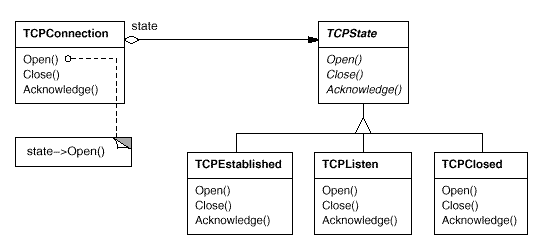Consider a class TCPConnection that represents a network connection. A TCPConnection object can be in one of several different states: Established, Listening, Closed. When a TCPConnection object receives requests from other objects, it responds differently depending on its current state. For example, the effect of an Open request depends on whether the connection is in its Closed state or its Established state. The State pattern describes how TCPConnection can exhibit different behavior in each state. The key idea in this pattern is to introduce an abstract class called TCPState to represent the States of the network connection. The TCPState class declares an interface common to all classes that represent different operational states. Subclasses of TCPState implement state-specific behavior. The classes TCPEstablished and TCPClosed implement behavior particular to the Established and Closed states of TCPConnection.
